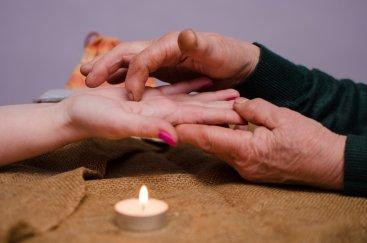Palmistry, also known as chiromancy, is an ancient divination practice that involves interpreting the lines, shapes, and markings on a person's palms to gain insight into their personality traits, life events, and potential future. Dating back thousands of years, palmistry has fascinated cultures around the world, and many believe that the lines on our hands hold valuable information about our lives. In this article, we will delve into the art of palmistry, exploring its history, key elements, and how palm readings are conducted.
The History of Palmistry
Palmistry traces its roots to ancient civilizations, including those in India, China, Egypt, and Greece. The practice spread across different cultures and evolved over time. In India, palmistry was considered a sacred science and an essential part of astrology. It was believed that the lines on one's palm were imprints of their karma and destiny.
In the Middle Ages, palmistry gained popularity in Europe, where scholars and mystics studied the hands of individuals to uncover hidden truths about their lives. Over the centuries, various palmistry traditions and systems emerged, each with its unique set of interpretations and symbols.
Key Elements of Palmistry
Palm Lines
The major lines in palmistry include the heart line, head line, life line, and fate line. Each line carries specific meanings related to emotions, intellect, vitality, and destiny.
Mounts
The mounts are the fleshy areas on the palm beneath each finger. They are associated with different planetary influences and reflect various personality traits and strengths.
Fingers
The length, shape, and flexibility of fingers are analyzed to reveal aspects of an individual's character, communication style, and creativity.
Thumb
The thumb represents willpower, determination, and individuality. Its shape and flexibility offer insights into a person's decision-making abilities.
The Palm Reading Process
Palmistry is a skill that requires a deep understanding of the various elements and their interactions. Professional palm readers use a systematic approach when conducting a reading:
Hand Selection
The first step is to determine the dominant hand. In palmistry, the dominant hand is considered the active hand, reflecting the current state of a person's life, while the non-dominant hand represents inherited traits and potential.
Hand Shape
The shape of the hand is examined to classify it into one of four categories: Earth, Air, Fire, or Water hands. Each type is associated with different characteristics and personality traits.
Line Analysis
The lines on the palm are carefully studied, paying attention to their length, depth, and intersections. The heart line reveals emotions and relationships, the head line indicates intelligence and decision-making, the life line reflects vitality and health, and the fate line points to career and destiny.
Mount Examination
The mounts are observed for their size, shape, and firmness, providing insights into the person's strengths, weaknesses, and potential challenges.
Ethical Considerations
Professional palmists adhere to a strict code of ethics when conducting readings. They should respect clients' privacy, avoid making overly negative predictions, and refrain from providing medical, legal, or financial advice. Palmistry is a tool for self-awareness and guidance, not a means to control or manipulate others' lives.
Limitations of Palmistry
While palmistry is intriguing and has provided valuable insights to many, it is essential to recognize its limitations. Palmistry is not a science and should not be used as a sole basis for making life-altering decisions. It offers possibilities and potentials rather than definite outcomes. People's lives are influenced by a combination of factors, including free will, environment, and unforeseen circumstances.
For More Info:-




.png)

Comments